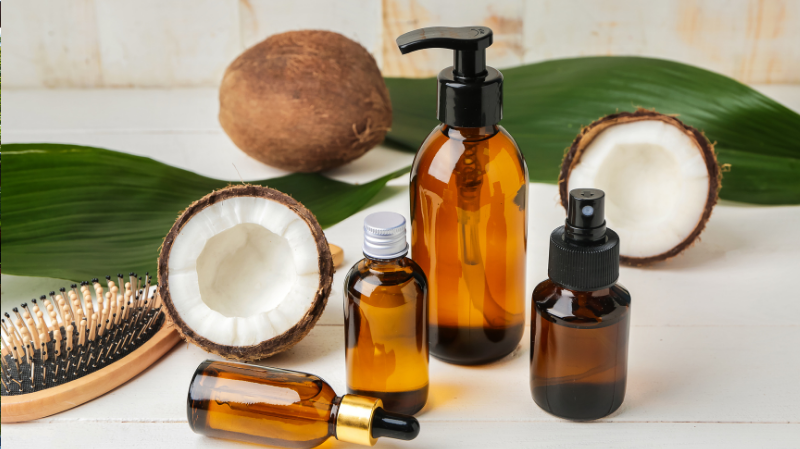The Australian hair care products market, valued at AUD 1.80 billion in 2024, is experiencing steady growth, driven by consumers’ growing focus on personal care, grooming, and hair health. With a projected compound annual growth rate (CAGR) of 4.51% from 2025 to 2034, the market is expected to reach AUD 2.80 billion by 2034. This growth can be attributed to the increasing demand for premium hair care products, the rising awareness of the benefits of healthy hair, and the adoption of new trends in hair care.
In this article, we will explore the key drivers behind the growth of the Australian hair care products market, emerging trends in the industry, the role of sustainability in shaping consumer choices, and what the future holds for hair care products in Australia.
Key Drivers of Growth in the Australian Hair Care Products Market
1. Growing Demand for Hair Care and Grooming Products
In recent years, there has been a noticeable increase in consumer awareness about hair health. Australians are placing more importance on grooming and personal care, with an emphasis on using quality hair care products to improve hair texture, manageability, and overall health. Whether it’s shampoo, conditioner, hair masks, or styling products, consumers are increasingly seeking products that not only beautify the hair but also promote healthy growth and strength.
This growing demand for hair care and grooming products is fueled by a shift in how Australians approach their daily self-care routines. People are investing more in hair care products that cater to their individual needs, such as products that address specific concerns like dandruff, dryness, and hair thinning. As a result, the hair care products market in Australia is expanding rapidly to meet the needs of consumers.
2. Rise of Premium and Specialized Hair Care Products
As Australians become more knowledgeable about hair health, there is a rising preference for premium and specialized hair care products. Consumers are moving away from basic drugstore brands and are increasingly opting for products with higher quality ingredients, specialized formulations, and proven efficacy.
Products such as sulfate-free shampoos, natural and organic conditioners, and hair serums enriched with essential oils and vitamins are gaining traction. The increasing demand for salon-grade hair care products is encouraging both local and international brands to offer more professional-quality options. These premium products often target specific hair concerns, including color-treated hair, frizz control, and deep hydration, which cater to the growing diversity of consumer needs.
Additionally, as consumers look for customized solutions for their hair care needs, the rise of personalized hair care products is also becoming a significant trend. Brands that offer products tailored to different hair types, such as curly, straight, fine, or thick hair, are growing in popularity.
3. Focus on Hair Care as Part of a Holistic Wellness Routine
The growing emphasis on holistic wellness has expanded beyond skincare and fitness to include hair health. Many Australians now view hair care as part of their overall well-being, leading to the development of products designed to support not only hair appearance but also its health.
Products enriched with vitamins, minerals, and natural extracts designed to promote scalp health, prevent hair loss, and support healthy growth are becoming increasingly popular. Brands are incorporating botanical ingredients like biotin, keratin, and caffeine into their formulas, which are known to nourish the hair and scalp and reduce hair thinning or breakage.
As part of this wellness shift, there is also an increased focus on scalp care. Products such as scalp treatments, exfoliating shampoos, and nourishing oils are helping consumers maintain a healthy scalp, which is essential for optimal hair growth.
4. Impact of Social Media and Influencers
The rise of social media and influencers has significantly impacted the Australian hair care products market. Social media platforms like Instagram, YouTube, and TikTok have become essential tools for consumers to discover new hair care brands and trends. Influencers and beauty bloggers often provide reviews and tutorials, recommending products that have proven successful in enhancing hair health and beauty.
As a result, there has been an increase in online brand awareness and a boost in product sales driven by influencer collaborations, sponsored content, and viral trends. For example, products that claim to address hair thinning or promote shiny, healthy hair often gain attention from influencers who share their results, leading to wider consumer adoption.
Consumers are also turning to online reviews and user-generated content to make informed purchasing decisions. This social proof and visibility have created a highly competitive environment for hair care brands, pushing them to innovate constantly and offer products that meet consumer expectations.
5. Sustainability and Clean Beauty Movement
Sustainability is a key consideration for modern consumers, and the Australian hair care products market is no exception. Australians are increasingly aware of the environmental and social impacts of the products they buy. As a result, there is growing demand for sustainable and “clean” beauty products that are cruelty-free, vegan, and made with eco-friendly packaging.
Brands that prioritize sustainability and transparency in their manufacturing processes are seeing increased demand. This includes using biodegradable ingredients, minimizing plastic packaging, and sourcing products ethically. Many consumers are opting for brands that demonstrate environmental responsibility, and as a result, the market for sustainable hair care products is on the rise.
In addition to the eco-friendly aspect, natural hair care products—free from harsh chemicals like parabens, sulfates, and artificial fragrances—are gaining popularity. The clean beauty movement is influencing purchasing decisions, as consumers prefer formulations that are gentle on their hair and scalp.
Key Trends Shaping the Australian Hair Care Products Market
1. Hair Care for Specific Hair Types
As the hair care market becomes more segmented, products tailored to specific hair types are gaining ground. Australians with curly, coily, or wavy hair are seeking out products designed to hydrate, define curls, and prevent frizz. Meanwhile, consumers with fine or thinning hair are turning to volumizing and strengthening treatments.
Customizing products to suit different hair types helps brands stand out in a competitive market. Specialized treatments like leave-in conditioners, curl creams, and texturizing sprays are becoming staples in Australian households, with growing demand for targeted solutions.
2. Men’s Hair Care Products
The demand for men’s grooming products, including hair care items, has been on the rise in Australia. Traditionally, hair care products were mostly targeted toward women, but the men’s grooming market has evolved significantly in recent years. More men are seeking out high-quality shampoos, conditioners, and styling products designed to address their unique hair concerns, such as thinning hair, scalp dryness, or dandruff.
Brands are now offering men-specific formulations with active ingredients that promote thicker hair, reduce scalp irritation, and add volume. The trend of personalized grooming routines for men is expected to continue to grow, further expanding the hair care market.
3. Hair Care Subscription Boxes
Subscription services for hair care products are becoming increasingly popular in Australia. These subscription boxes allow consumers to try new hair care products on a regular basis, providing them with curated selections based on their hair type and needs. The convenience and personalized nature of these services are driving their popularity.
Subscription boxes often include samples of new products, which allows consumers to experiment with new brands without committing to full-sized products. This trend is particularly appealing to millennials and Gen Z consumers who are keen to discover the latest hair care innovations.
4. Innovation in Product Delivery and Formats
Innovation in how hair care products are delivered is another emerging trend in the Australian market. Brands are experimenting with new formats such as shampoo bars, refillable containers, and hair care concentrates that minimize plastic waste. These delivery formats are environmentally friendly and appeal to eco-conscious consumers looking for sustainable options.
Additionally, some brands are offering dual-purpose products, such as all-in-one shampoo and conditioner, to simplify routines. This convenience factor is especially appealing to busy consumers who seek efficiency without compromising product performance.
Challenges Facing the Australian Hair Care Products Market
1. Price Sensitivity
As with many consumer goods, price sensitivity can be a challenge in the hair care market. While premium and eco-friendly products are becoming more popular, some consumers may be hesitant to invest in high-end products, especially during times of economic uncertainty. Offering competitive pricing without compromising quality will be a key strategy for brands aiming to capture a wide consumer base.
2. Intense Competition
The Australian hair care market is highly competitive, with numerous brands—both domestic and international—vying for market share. This intense competition means that brands must continuously innovate, stay ahead of consumer trends, and differentiate themselves to remain relevant.
Future Outlook for the Australian Hair Care Products Market
The Australian hair care products market is expected to continue its growth, with a projected market value of AUD 2.80 billion by 2034. As consumers continue to seek products that enhance hair health and cater to specific needs, the demand for premium, eco-friendly, and customized solutions will drive innovation and competition in the industry.




